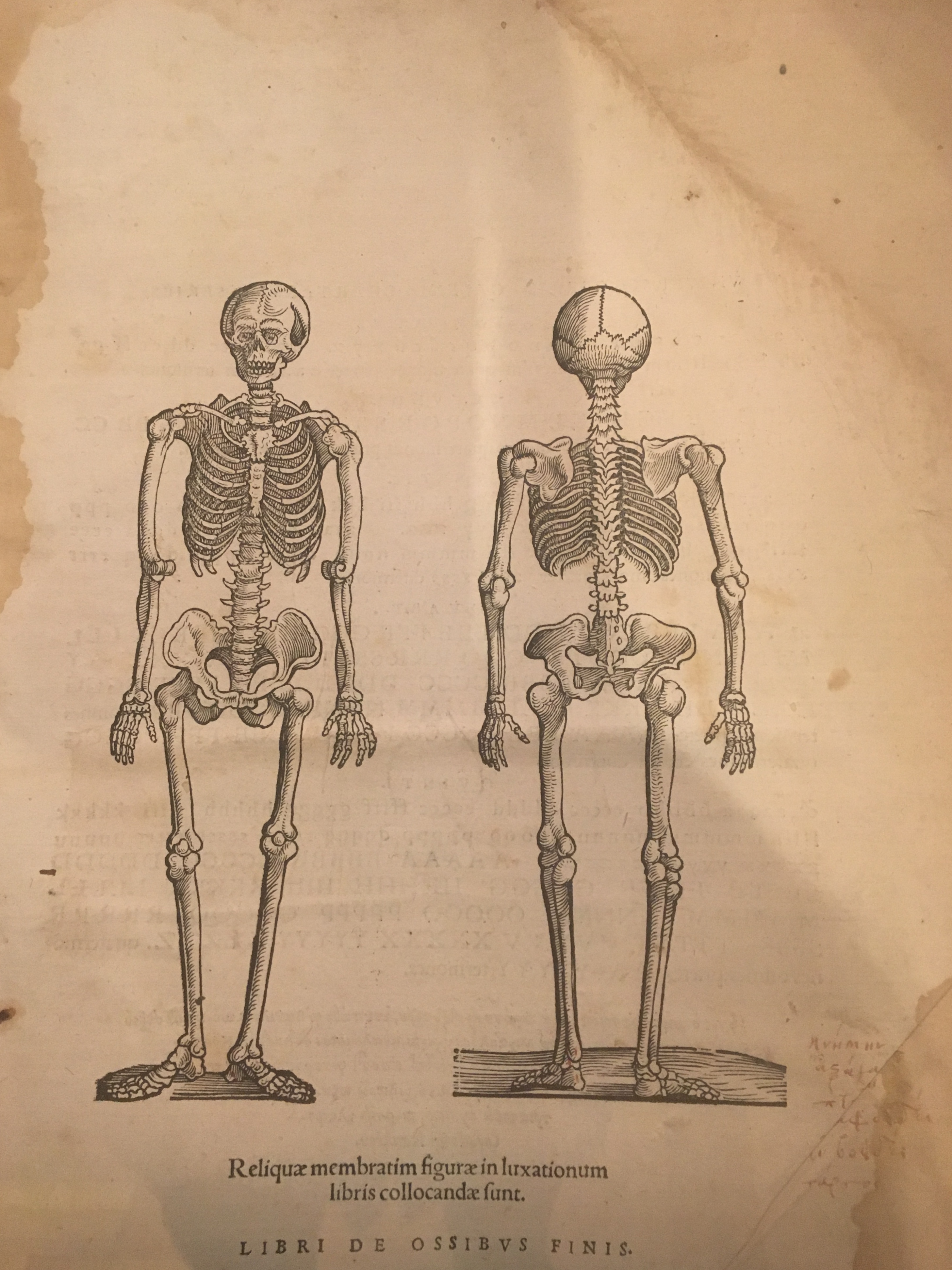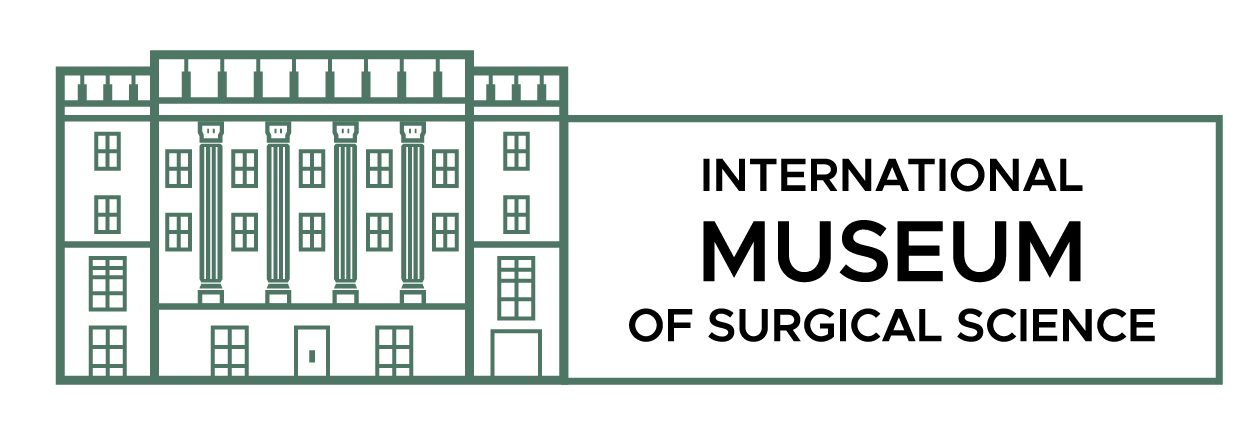Published by Annagh Devitt

Most visitors to the Museum recognize something “off” about this skeleton. This ‘something’ is hard to pin down; perhaps it is the unsettling face, or the way the shoulders stick out a little too far, or maybe it is the artistic rendering of the humerus that curves like the end of a dining room chair. The visitors’ instincts are right; this skeleton, is not quite correct, or rather not quite human.
The image is a Galenic ideal, or the anatomy popularized by the ancient Greek physician Galen. In his time, human dissections were outlawed so most of his anatomical work was a result of animal dissections, primarily dogs, pigs, and primates. Despite his limitations, Galen’s assumptions and attempts to understand the human form are rather remarkable. Perhaps the most critical aspect of Galen’s work is how long it was relevant. For nearly 1,500 years, the Grecian’s work was accepted as truth and never questioned, despite his successor’s use of human cadavers. 1 Visitors to the Museum do not need to be doctors or have extensive knowledge of anatomy to see that Galen’s skeleton is wrong; similarly, non-physicians throughout the ages did not need a medical background to represent the human form in art or to preserve a dead body. Humans have known much more about anatomy than would be surmised by medical history alone.
Often it was neither doctors nor physicians advancing anatomical knowledge but artists and embalmers. That’s not to say physicians were uninterested in anatomy; instead, it was a matter of application. While the knowledge of an anatomical system might be known, the tools to use that knowledge for diagnosis and surgery were not. Because of this, we see two parallel histories: one of medical development and achievement and the other of ritualistic practices and artistic endeavors, both of which aid our current understanding of anatomy.
Physicians after Galen suffered from this separation of advancements. The artists were often the ones dissecting humans, or put more aptly, the ones actually learning from human cadavers. When human dissection began to be accepted, Galen’s teachings had been taught long enough to be accepted as doctrine. So, when physicians did dissect cadavers, they often did so only to demonstrate what was already known, often perpetuating anatomical inaccuracies. These inaccuracies were accepted because of two reasons: the learned physicians often did not lead the dissection, instead preferring to direct pupils from a distance, and the cadavers that were used were often criminals or had an illicit past. 2

The convergence of these two histories occurred quite literally. Vesalius, the father of modern anatomy, as with many physicians of his time got medicine from an apothecary, the same place many artists got their pigments. From chance interactions, Vesalius likely learned what later caused him to make his famous De Humani Corpus Fabrica. In his first illustration he gives credit to Galen for his advancement with the inclusion of a monkey and a dog in his anatomical theater, two of the animals Galen used in his studies. However, Vesalius himself is guiding the dissection, seemingly a criticism of the anatomists of his time.
Vesalius’ other illustrations also seem to illustrate the convergence of art and medicine. In his famous muscle man, he depicts his figure in many artistic poses, again in contrast to the zodiac man. Furthermore, the background of his multiple figures come together to make one large sense as if to create a narrative alongside his anatomical display. 3

Vesalius shed light on many of the unknowns of human anatomy. While his depictions were not completely accurate, there were no greater breakthroughs in form. The anatomical achievements after Vesalius mainly had to do with the greater methods of anatomical teachings and improved ethics.
Notes & Bibliography:
- Duffin, Jackie. The History of Medicine: A Scandalously Short Introduction. University of Toronto Press, 1999.
- Ghosh, Sanjib Kumar. “Human cadaveric dissection: a historical account from ancient Greece to the modern era.” Anatomy & cell biology vol. 48,3 (2015): 153-69. doi:10.5115/acb.2015.48.3.153
- Kemp, Martin. “A Drawing for the Fabrica; and some Thoughts Upon the Vesalius Muscle Men.” Medical History 14 (2012): 277-288.
Annagh Devitt is the current Education Intern at the International Museum of Surgical Science. She is a student studying chemistry at the University of Chicago. Her interests include the history of medicine, in particular how ethics in medicine has developed throughout history.


